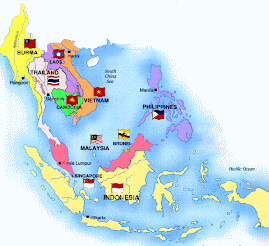"The Biochar Malaysia Workshop 2010 was held from the 25-26 March 2010 at Universiti Kuala Lumpur MICET (www.micet.edu.my) and co-sponsored by IBI and Kusocom Concept Farms Sdn Bhd. Participants from as far as UK (Sarah Carter from the UK Biochar Research Centre, Edinburgh; http://biocharinnovation.
Dr Cornelissen and Dr Hale introduced a very sensitive and yet low-tech passive sampling method coupled to GC-MS for the detection of polyaromatic hydrocarbons (PAHs) in pore water of biochar amended soil. This method is expected to significantly enhance our quantitative understanding of the fate of this group of organic pollutants but also its release from certain low-carbonization grade biochars. Work is also underway at NGI to artificially age different types of biochar and quantify carbon loss. This parameter is of special interest for the advocacy of biochar as carbon sink, carbon credit trading etc. Trevor provided an insight into biochar activities in the SE Asia region including Dr Francis Ng’s "secret garden" on the roof top of 1Utama shopping center in Kuala Lumpur (http://tropicalhorticulture.
From Dr Francis' secret garden experience we learnt that in Malaysia, the most favoured soil for horticulture is garden black soil, which goes by the Malay name of tanah hitam (black soil). Black soil originated in household backyards where domestic waste was dumped and periodically burnt. The black colour was due to the accumulation of charcoal and soot in the soil over time. Tanah hitam in Malaysia seems to be very similar the terra preta in the Amazon. What was also interesting from a civil engineer's perspective is that the biochar soil mixture used on the roof of the shopping complex at 1Utama is lighter than pure conventional soil thus lessening the weight load on the building's infrastructure. Dr Francis' idea should be of interest to the green building sector.
Dr Bachmann provided a brief overview of various biochar production methods (e.g. torrefaction, slow/flash pyrolysis), systems and economics. Small-scale systems such as Lucia's Stove (http://worldstove.com/
Last but not least physico-chemical methods covered include pH of point of zero charge (pHpzc), CHNS, FTIR, BET. For more information please visit http://www.micet.edu.my."




